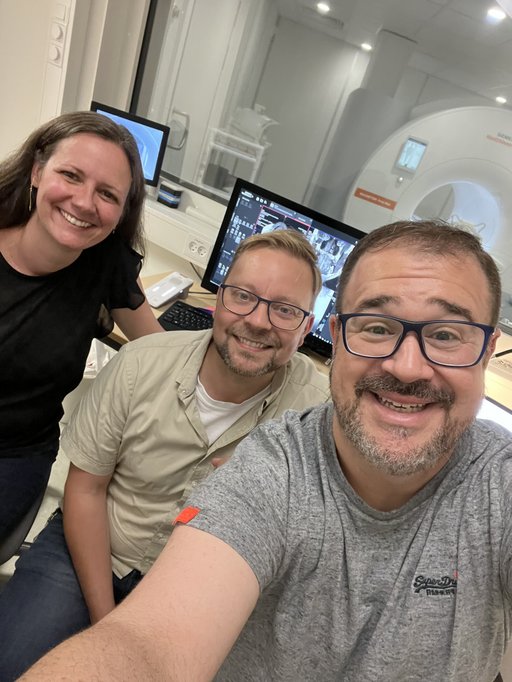Fun facts about the faculty: From the first X-rays to the latest radio waves
Two large trucks, a giant crane, and over 20 men held their breath, their nerves on edge as the world's first and only dental MRI scanner landed at IOOS exactly one year ago. It is a breakthrough in medical imaging with a hair-raising history. Did you know that...

- ... the German dentist Dr. Otto Walkhoff lost all his hair in 1896? Wilhelm Röntgen had just introduced the world to a new type of radiation that could see through clothing, skin, and muscles and capture images of bones. So, Walkhoff thought, it should also be able to be used on teeth. Just two weeks after Röntgen's announcement, Dr. Walkhoff was ready to take the world's first dental X-ray, and naturally he placed the film in his own mouth. The exposure lasted a whopping 25 minutes, and the radiation dose was so high that he began losing his hair shortly thereafter.
- ... doors and a large window section were removed, radiators were taken out, and several walls were demolished to install the MRI scanner at IOOS? It required hammering and banging followed by delicate maneuvering and millimeter precision to move the equipment from the truck into the wing of the department that the Danish Agency for Culture and Palaces now wants to protect as a historic site. The super high-tech dentomaxillofacial MRI scanner now resides in the space that previously housed the department's old paper journal archive. And it is quite fitting, as the MRI scanner heralds a new era of research in oral radiology.

- ... the person who had the world's first dental MRI scan did not have any dental issues, only butterflies in the stomach? The very first "patient" in the scanner was Casper Kruse, who until recently was an assistant professor at the department and conducted research in oral radiology himself. His colleagues Jennifer Christensen and Rubens Spin-Neto operated the technology on the opening day, and since then, the machine has been in use a staggering 250 times - half of them with real patients in the magnetic field.